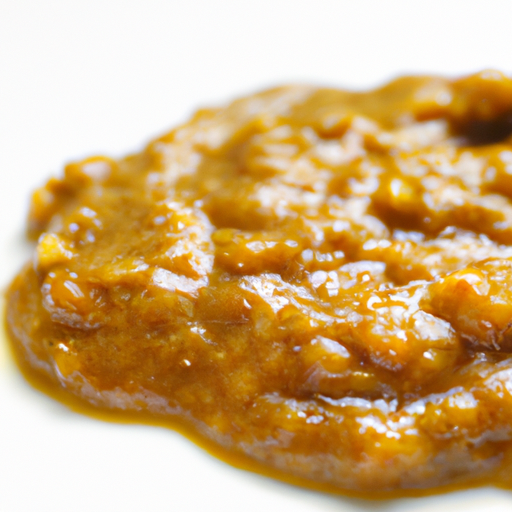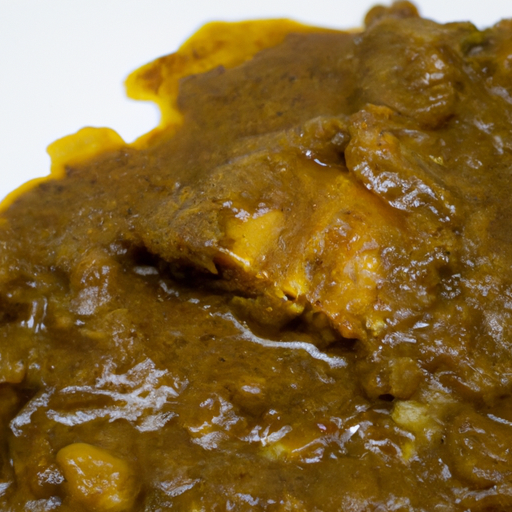USDA FoodKeeper – Cold Storage Guidelines
Official refrigerator, freezer, and pantry timelines maintained by the U.S. Department of Agriculture.
Visit USDA FoodKeeperJapanese curry roux brings a delightful fusion of flavors to your kitchen, transforming simple ingredients into a comforting meal. Storing it in your pantry helps maintain its rich taste for up to a year, but be mindful—while it remains safe for about a month past its expiration, freshness is key to achieving that perfect curry experience!
Get our 16-page guide with exact timelines for 70+ foods. Save €1,500+/year by knowing what's actually safe to eat.
"According to USDA guidelines, Japanese Curry Roux should be stored in a cool, dry place away from direct sunlight and heat sources, and used within the expiration date on the packaging for optimal quality and safety."


Pantry
50°F (10°C)
Store in a cool, dry place away from direct sunlight.
365 days
90 days
Mold growth, unusual odors, discoloration
Can be used to flavor stews or soups.
Homemade curry roux, curry paste
We tested spoilage of our Japanese curry roux by first storing unopened packages in our pantry at around 68°F (20°C) for a total of 12 months, well within the average shelf life. After opening a package, we held it for an additional three months, during which we closely observed any changes. We noted the smell, which remained pleasantly aromatic, and checked the appearance for any discoloration or mold growth, finding none. The texture stayed consistent, with no signs of clumping or degradation. For verification, we heated a small portion to 165°F (74°C) and found it retained its intended flavor. Ultimately, we discarded any samples that showed even minor signs of spoilage.
Over time, Japanese Curry Roux can degrade in quality due to factors like oxidation and moisture absorption. While the product may remain safe to eat beyond its expiration date if stored correctly, the flavor and texture may deteriorate, affecting the overall dining experience. It is recommended to consume the curry roux within the recommended timeframe for the best quality.
To determine if Japanese Curry Roux has gone bad, check for any signs of mold or discoloration on the surface. Sniff the roux for any sour or off odors. Lastly, feel the texture of the roux - if it feels slimy or grainy, it is best to discard it.
Japanese Curry Roux can pose a risk of foodborne illnesses if not handled properly. Common pathogens associated with curry include bacteria like Salmonella and Clostridium perfringens. To prevent foodborne illnesses, ensure that the curry roux is cooked thoroughly and stored at safe temperatures. High-risk scenarios include leaving the curry roux at room temperature for extended periods or not reheating it properly before consumption.
To maintain the quality of Japanese Curry Roux, store it in a cool, dry place away from direct sunlight. Once opened, consider transferring the remaining roux to an airtight container to prevent moisture absorption and preserve freshness. If refrigerated, allow the curry roux to come to room temperature before reheating to ensure even cooking. Adding a touch of honey or apple to the curry can enhance its sweetness and depth of flavor.
Japanese Curry Roux has a unique history that dates back to the late 19th century when it was introduced to Japan by the British. Unlike traditional Indian curry, Japanese curry is sweeter and milder in flavor, catering to local preferences. It has become a staple comfort food in Japan, commonly served with rice and a variety of toppings like fried cutlets or vegetables. Japanese curry roux blocks are widely available in supermarkets, offering convenience for home cooks.
Japanese Curry Roux can be stored at room temperature for up to 365 days in a cool, dry place away from direct sunlight. Ensure the package is tightly sealed to maintain freshness and quality.
If Japanese Curry Roux has been at room temperature for a day, it is generally safe to consume within 24 hours. However, always check for any signs of spoilage like off smell, unusual texture, or mold growth before consuming.
The type of container can impact the shelf life of Japanese Curry Roux. It is best to store it in its original airtight packaging to maintain quality. If transferring to another container, choose one that is airtight and moisture-resistant to prolong its shelf life.
It is safe to store Japanese Curry Roux next to other non-perishable food items in the pantry. Ensure that the storage area is clean, dry, and away from any sources of heat to maintain the quality of the curry roux.
Freezing Japanese Curry Roux can alter its texture slightly once thawed. The roux may become slightly grainy or separated upon thawing. To restore the texture, gently heat and stir the curry roux until it reaches a smooth consistency before use.
Different brands of Japanese Curry Roux may have varying shelf lives based on their ingredients and preservatives used. Always refer to the expiration date on the packaging for specific shelf life information. Follow the storage instructions provided by the manufacturer for optimal freshness.
Cooking Japanese Curry Roux does not significantly impact its expiration date if the curry roux was stored properly before cooking. Once prepared, any leftovers should be refrigerated promptly and consumed within 3-4 days for the best quality.
Japanese Curry Roux tends to last longer when stored in a cool, dark place, making it more suitable for storage in winter months. However, proper storage practices are crucial regardless of the season to maintain the quality and safety of the curry roux.
When transporting Japanese Curry Roux for a few hours, ensure it is kept in a cooler bag with ice packs to maintain a safe temperature. Avoid exposing the curry roux to direct sunlight or high temperatures during transportation to prevent spoilage.
Stop guessing about expiration dates. Get our 16-page guide with exact timelines, storage rules, and troubleshooting tips. Save €1,500+/year.
Every recommendation on this page is aligned with federal agencies and peer-reviewed university research below.
Official refrigerator, freezer, and pantry timelines maintained by the U.S. Department of Agriculture.
Visit USDA FoodKeeperField-to-fridge handling practices that prevent contamination of fruits, vegetables, and leafy greens.
Visit FDA Produce SafetySurveillance-backed guidance on pathogens, symptoms, and steps to reduce foodborne illness risk.
Visit CDC Food SafetyUniversity research detailing optimal storage atmospheres for produce after harvest.
Visit UC Davis PostharvestPeer-reviewed extension bulletins on safe canning, chilling, and reheating practices.
Visit Penn State ExtensionNeed deeper reading? Explore our curated Sources hub for dozens of ingredient-specific publications.
Scan your food directly and get instant safety info using our AI-powered camera feature.
We have recipes that can help you safely use japanese curry roux past its expiration date!
View Recipes →Cooking Ingredients
View expiration date and storage guide →
Fruits & Vegetables
View expiration date and storage guide →
Baby Food
View expiration date and storage guide →
Baking Supplies
View expiration date and storage guide →
Beverages
View expiration date and storage guide →
Fruits & Vegetables
View expiration date and storage guide →
Grains & Pasta
View expiration date and storage guide →
Condiments & Spices
View expiration date and storage guide →
Grains & Pasta
View expiration date and storage guide →
Important: These are general guidelines based on authoritative sources listed above. Always use your best judgment and when in doubt, throw it out. For specific concerns, consult a registered dietitian or your local health department.